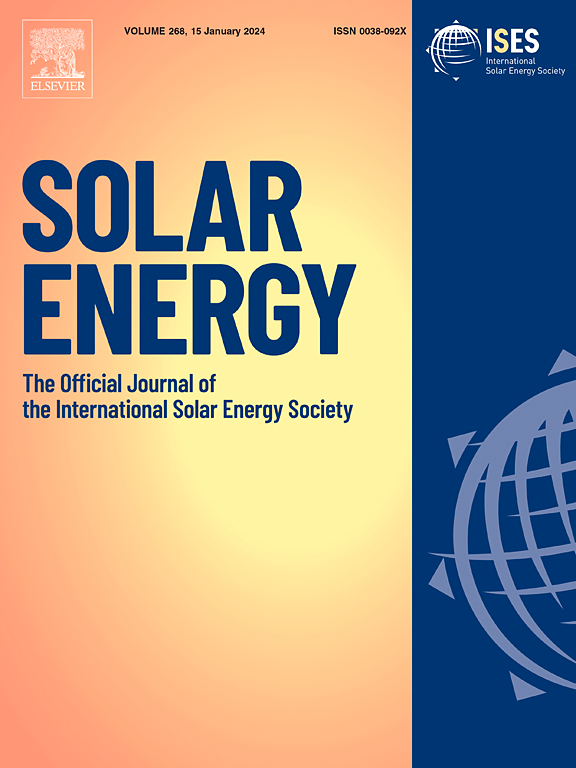Broadband and wide-angle antireflection in silicon solar cells using atomically thin MoS2 with a gradient unit cell structure
IF 6
2区 工程技术
Q2 ENERGY & FUELS
引用次数: 0
Abstract
Nanostructures have been extensively utilized to enhance light trapping and minimize reflection losses in silicon solar cells, leading to significant improvements in photovoltaic performance. Understanding how these structures influence broadband and omnidirectional antireflection (AR) is crucial for advancing solar technologies. In this study, we present an innovative AR design that integrates atomically thin MoS2 with a gradient unit cell structure. Using finite-difference time-domain (FDTD) simulations, we demonstrate the exceptional broadband and wide-angle AR performance of this configuration. The gradient unit cell design enables effective light management across a wide range of incident angles and wavelengths. This approach offers a simpler alternative to conventional graded refractive index structures, reducing the complexity of fabrication while maintaining high efficiency. Our findings highlight the potential of this structure to revolutionize solar cell performance, paving the way for next-generation photovoltaic technologies.
使用具有梯度单胞结构的原子级薄 MoS2 在硅太阳能电池中实现宽带和广角减反射
纳米结构已被广泛用于增强硅太阳能电池的光捕获和减少反射损失,从而显著提高光伏性能。了解这些结构如何影响宽带和全向抗反射(AR)对于太阳能技术的发展至关重要。在本研究中,我们提出了一种创新的 AR 设计,它将原子级薄 MoS2 与梯度单元结构相结合。通过有限差分时域 (FDTD) 仿真,我们证明了这种配置具有卓越的宽带和广角抗反射性能。梯度单元尺寸设计能够在广泛的入射角度和波长范围内实现有效的光管理。与传统的梯度折射率结构相比,这种方法提供了一种更简单的替代方案,在保持高效率的同时降低了制造的复杂性。我们的研究结果凸显了这种结构彻底改变太阳能电池性能的潜力,为下一代光伏技术铺平了道路。
本文章由计算机程序翻译,如有差异,请以英文原文为准。
求助全文
约1分钟内获得全文
求助全文
来源期刊

Solar Energy
工程技术-能源与燃料
CiteScore
13.90
自引率
9.00%
发文量
0
审稿时长
47 days
期刊介绍:
Solar Energy welcomes manuscripts presenting information not previously published in journals on any aspect of solar energy research, development, application, measurement or policy. The term "solar energy" in this context includes the indirect uses such as wind energy and biomass
 求助内容:
求助内容: 应助结果提醒方式:
应助结果提醒方式:


